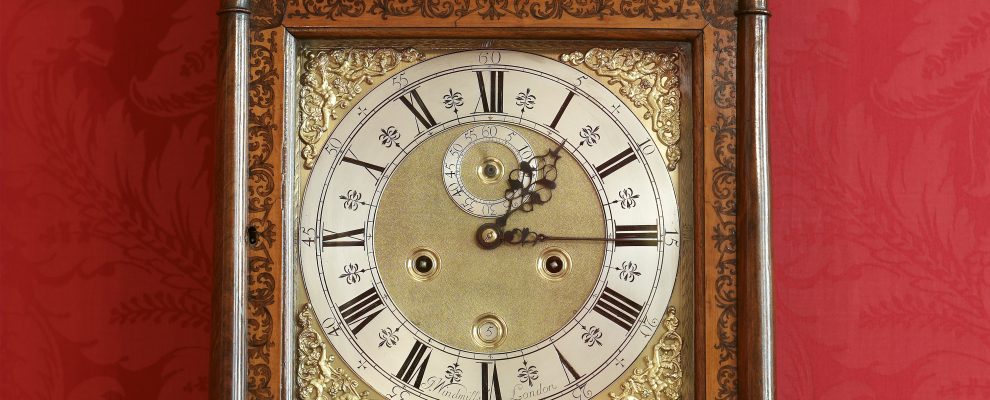In December 1656 the Dutch scientist and horologist Christiaan Huygens invented a mechanism that would transform the working of the mechanical clock: the pendulum. Huygens realised that the even back-and-forth swing of the pendulum provided an ideal regulator for a clock mechanism, making possible an unprecedented degree of accuracy.
In the following year clockmaker Salomon Coster of The Hague obtained exclusive patent rights for making Huygens’s pendulum clocks in Holland. A prominent family of London clockmakers swiftly sent a son, John Fromanteel, to be apprenticed to Coster. The Fromanteels were able to announce in the London newspaper Mercurius Politicus of 27 October 1658 that ‘There is lately a way found out for making of Clocks that go exact and keep equaller time than any made without this regulator…’
The adoption of the pendulum radically changed the nature of the mechanical clock across England and indeed the rest of Europe. The great advantage of the pendulum for controlling the escapement, whether the clock is spring-driven or weight-driven, is that, unlike earlier controlling devices, the freely swinging pendulum has a definite period of its own. Under ideal conditions the pendulum will swing an equal distance both to the right and to the left of a given point in an equal amount of time.
English clock technology was leading the field in the latter part of the seventeenth and the early eighteenth centuries, and London clockmakers put the pendulum to use in their clocks almost immediately, taking advantage of the extra accuracy it provided. The Imperial pendulum was slightly more than thirty-nine inches in length and took one second to traverse its arc, giving a beat of one second and allowing clock dials to display the passing of seconds without the need for complicated gearing. The weight at the bottom of the pendulum was formed into a double-sided convex disk, which was found to offer the least resistance to the air.
The delicate, elongated pendulum and its bulky weights needed to be protected from accidental movement and dust. The solution was the longcase clock (popularly known as the grandfather clock), which was developed in England during the seventeenth century. The long wooden case with its hood at the top enclosed and protected the vulnerable mechanism, and, often elegantly finished and decorated, rapidly gained popularity among clockmakers and their customers. This was the birth of the English longcase clock which went on to flourish throughout the eighteenth century.
This new technology not only enabled greater accuracy in timekeeping. It also meant that clocks could run for longer without constant correction and adjustment. Clockmakers were able to perfect not only eight day clocks, a great improvement on the standard thirty hour clocks that had been most commonly available, but also more complex month-going clocks, and eventually year-going clocks. As their name suggests these extraordinary timepieces required winding only once a year, and the most sophisticated examples sometimes incorporated perpetual calendar mechanisms that adjusted automatically for the different months of the year.
(From Keeping Time a temporary exhibition at Fairfax House, 5th October-31st December 2012)

Name: Hannah Phillip
Title: Director
Source: Keeping Time (Fairfax House, 2013)
